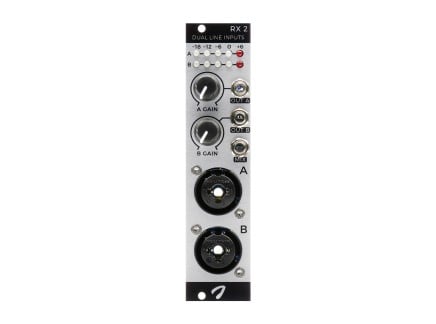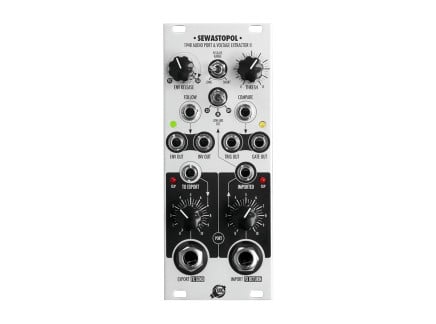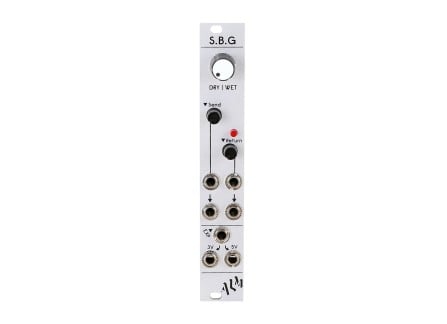Let’s face it…modular synths are creative candy. Each new piece represents the possibility to do something you couldn’t do before, and in a way that feels integrated into a system that YOU built. In a world where guitar players name their guitars, it gives the synth fanatic a similar feeling of personalization. After all, no one has your exact system, and no one has the experience of putting your system together. It is because of this that the format can often inspire its adopters to sell off all other gear to have a setup consisting of only modular gear.
After all, with all this modular interactivity, why bother stepping outside of that to use other instruments that may require a little bit more work to make it seamless in operation? Having an all modular setup is absolutely alluring...but is this really the best approach to using modular gear?
Sure, going back to a MIDI instrument or a stringed instrument after using only a CV-based modular setup can feel a bit like trying to speak multiple languages at the same time...but maybe that's the idea! Just like in the world around us, multiple instrumental languages or musical cultures can inspire different approaches, and thus inspire different musical outcomes. For instance, I absolutely do not write the same on a guitar as I do a modular synth—and I imagine this is true for most people.
This article will attempt to look at a few different approaches to integrating modular synths into a broader range of musical instruments and studio setups. First, we will attempt to briefly lay out some of the advantages and disadvantages of the Modular-Only Setup so we have a baseline for comparison and further discussion.
Scenario 1: Modular and...More Modular
In terms of music equipment, there are few things that will look as impressive as the fully decked-out modular synthesizer, complete with blinking lights and a ton of patch cables. It is the instrument most likely to prompt your visiting friend to ask, "who is flying the spaceship"—and your uncle to make a joke about you getting a job as a telephone operator. Modular looks exciting, and it is exciting.
First, some of the good…
One of the biggest appeals of the modular only setup for many people is the idea of a music studio in a box. Having nearly an entire studio worth of equipment in a little fold-up case is very cool and, to a certain degree, novel. For instance, at this point in Eurorack, there is at least some semblance of nearly every piece of outboard gear you could want in the format. You could take a sound created in the case and run it further through the signal path to compress and EQ and mix and record right there in one go. Not only that—but you could pick it up and take it on a vacation with you to keep working on it. We are not necessarily suggesting you should—but you could, and hey...it's up to you how you choose to spend your vacation. Regardless, it's a neatly assembled music maker in a tiny package.
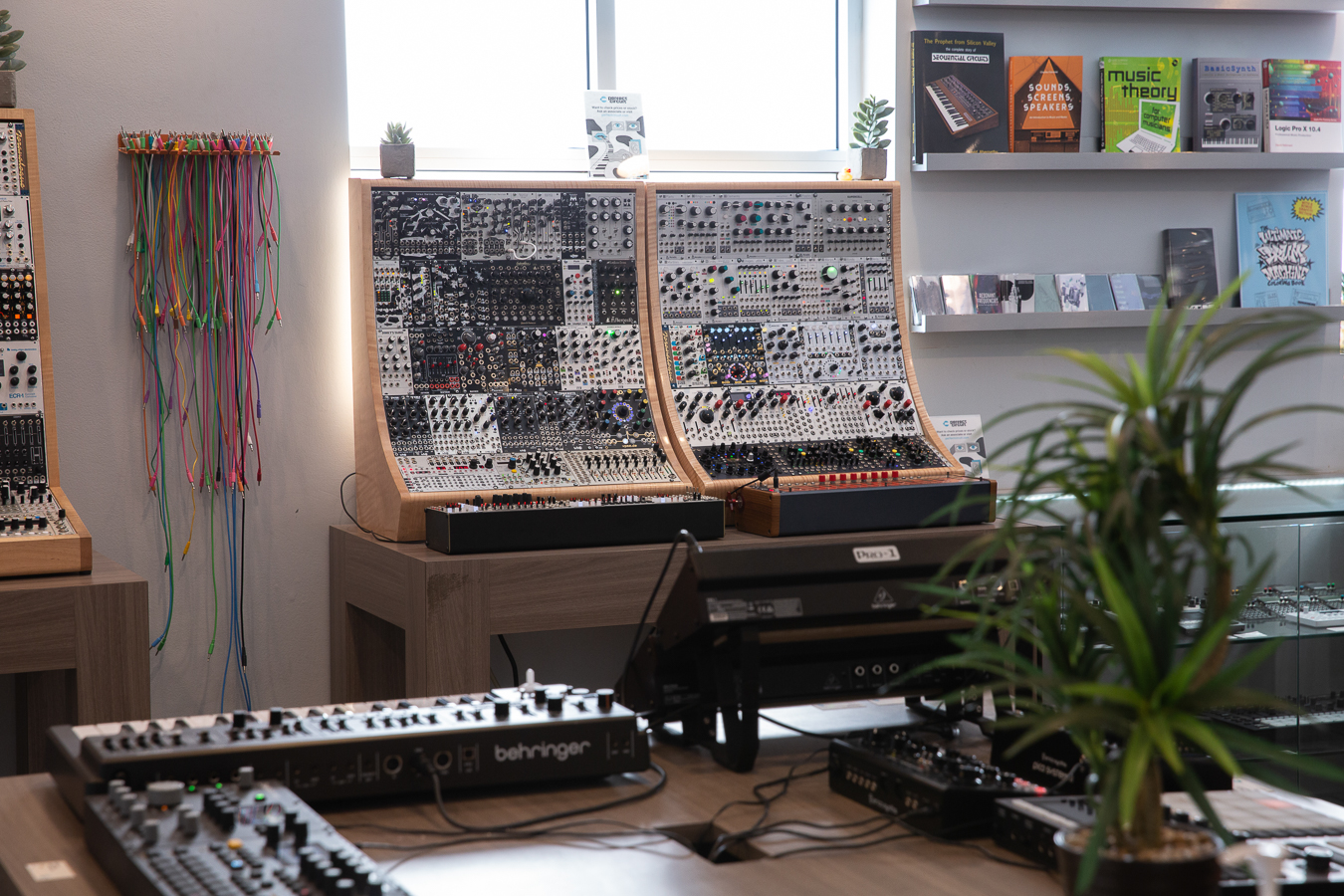
A second major advantage of the all-modular setup is that for the most part, the pieces of the puzzle are meant to fit together. Within a chosen format, there are bits of standardization that will make it so having these individual components communicate is as simple as plugging in a cable or two. The headache of figuring out how to get one piece of gear to speak to another is pretty much gone.
This brings up a third positive...a speedy workflow. To the uninitiated, modular looks like something that would simply add time and effort to coming up with sounds. However, for those who have been at it a while, the opposite may actually end up being true. Patching and unpatching ends up second nature and becomes just as fluid as programming a synthesizer, or tuning and playing a stringed instrument. The signal path is often very logical, and once that is fully internalized, the boundaries that are there on a hardwired instrument will disappear on a modular one.
…and now, some of the bad…
Of course, the idea of the all modular setup has its disadvantages as well. An example of this is price. Modular isn’t cheap, and it most likely won't save you money by trying to do everything in one case. These little modules will undoubtedly add up over the course of a few hundred (and likely many more) HP and there are cheaper ways to get the job done. If you wanted to do everything in the modular realm, there would be a wide range of other needed functions beyond just those in a synthesizer. Now, to be fair, getting all of these functions in a studio is generally expensive in any form...but modular is certainly no exception to the rule.
A second and perhaps greater issue with the modular-only approach is the exclusion of a lot of other really great and inspiring gear. Even staying just in the world of synths, there is something to be said for plugging in an original Roland SH-101 and just tapping out a quick sequence. Those faders and knobs inspire in a specific way, and it's just not going to be the same on anything else.
Going beyond synths, there are of course a ton of other inspiring instruments each with their own strengths and weaknesses that the all modular approach just wouldn’t get anywhere near. The expressiveness that comes with the slight bend of the strings when playing the guitar is kiiiind of what the instrument is all about. Each guitarist's fingers are going to make those six strings sound a little bit different, and that's why the instrument endures in the way that it does. It is partially because of this that the same basic chords can be played by thousands upon thousands of players and still inspire new songs. So, why cut that out with the limitation of an only modular setup?
Integration is Key
In the modern era, the breadth of new and inspiring musical equipment is staggering, and modular synths are in the unique position of being entirely adaptable. Since everything about a modular setup is what you choose it to be, then perhaps it would be best to consider the modular synth based on the purpose it will serve in a particular setup. If we build a case based on a role that has been predetermined, then undoubtedly that role will be fulfilled to a much greater degree than in a case that was trying to be everything.
Let's take a look at a few possible uses of modular synths outside of the “all-modular” approach discussed above.
Scenario 2: Modular as an FX Rack
With so many good plug-ins ready-made for whatever DAW you use, it’s easy to dismiss modular effects as being somehow unnecessary. However, there is a major advantage to using a modular effect unit: there is a sense of playable and tactile automation in doing so. Modules like the Make Noise Erbe-Verb, Mutable Instruments Beads, or the Alright Devices Chronoblob 2 offer the user the ability to automate and modulate many (if not all) of the parameters of the effects being used. On top of that, hands-on control of the knobs and switches provides a very different experience than setting automation of an effect in a DAW. In short, the effects become a playable part of a composition rather than simply a background layer to add texture.

The idea of a self contained FX rack is obviously one musicians and producers have subscribed to for ages with guitar pedal rigs and rack mount effects. The modular FX rack will only add another dimension to that. [Editor's note: we cover the process of building a modular FX rack in detail in this dedicated article; but here, let's continue to point out some of the more critical ideas to consider.]
One good way to integrate modular with external instruments is with the use of a signal input module like the Joranalogue Receive 2 or the Xaoc Devices Sewastopol II. The main issue when attempting to marry external instruments to modular is often signal level. For example, Eurorack generally operates at a much louder level than a guitar would output. Therefore, it’s best to give that signal a boost as it's sent into a Eurorack FX case.
A module like Sewastopol even has a handy envelope follower to convert the signal being sent into the module into a control voltage signal to be used elsewhere. One fun thing to do here would be to have that control voltage control the decay of a reverb or effect so the harder you hit the strings on a guitar, for instance, the longer the decay would be. Or perhaps that voltage controls a filter cutoff, so the harder you play the more the filter opens. This would add an expressiveness to playing beyond what most pedals can do.
As an added bonus, it is possible to use a combination of pedal-based effects and modular based effects in tandem quite easily by using an FX send module. Using something like the ALM S.B.G. or the Strymon AA.1 allows for a signal to be sent out from a Eurorack case to a pedal chain and then back in to the modular system. The magic of being able to use a combination of tried-and-true pedal classics with the most modern modulatable effects is endlessly cool. A guitar into a fuzz pedal, back into a granular module with some reverb on top is probably going to upset the sound guy...if he's still there at that point. But it'll sound great.
Scenario 3: Modular as a Single Instrument
A second method of integrating modular into a bigger setup is by thinking of it as a single instrument. When looking at many synthesizers with lasting legacy like a Moog Model D or a Korg MS-20, it becomes apparent that there is not much "extra" on those synths. In fact, compared to the average Eurorack setup, there is quite a bit less going on in most self-contained synths. However, the key here is that what is there is very carefully designed to meet the needs of the synth itself and the player using it. These synths were not meant to do everything—the parts just work together really well to inspire the musician to create.
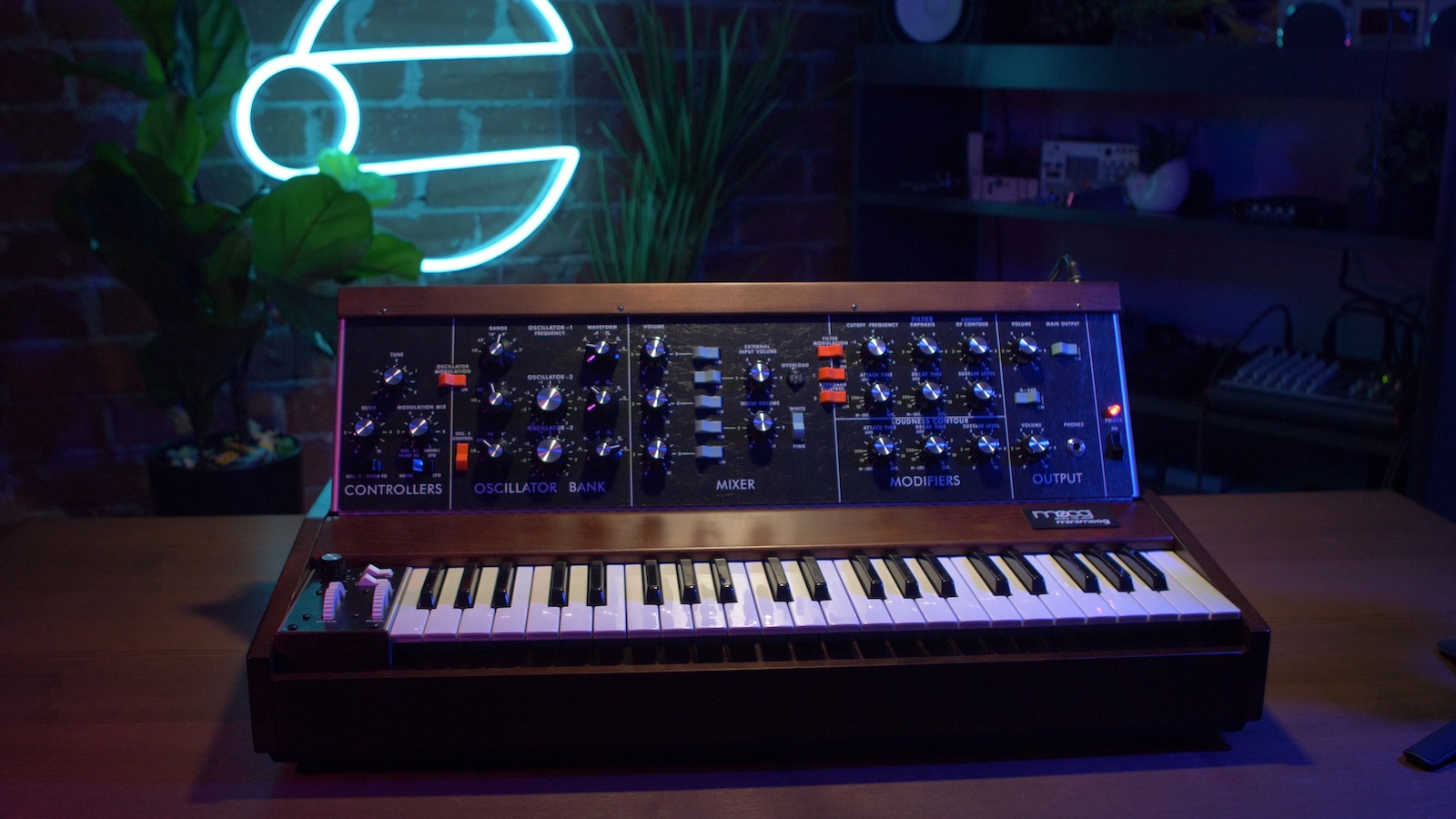
[Above: the Moog Minimoog Model D—one of the best-loved all-in-one synthesizers of all time.]
The best part of approaching things this way is the ability to make a sort of personal "dream synth" based on what you want it to be. As a simple example related to the instruments mentioned above, if you wanted the oscillators of the Model D but the filter squeal and howl of the MS-20...well, you could choose modules based on those parts and put them together. There are even versions of some of these classic synth parts that have been pushed a little further than their original counterparts. For instance, the Rossum Evolution is a sort of "next step" or—*ahem*—evolution of the Moog ladder filter. There are a lot of examples of a unique spin on a classic idea in modular.
Regardless of what modules you choose, this approach will allow you as a musician to end up with a clearly defined end result that will serve a specific role in your arsenal of sound making tools. It is not a modular setup that is everything under the sun, but it's exactly what you choose. In this way, it's more likely you’ll use modular for the role you made it for, and save the musical roles it can't handle for the gear that can.
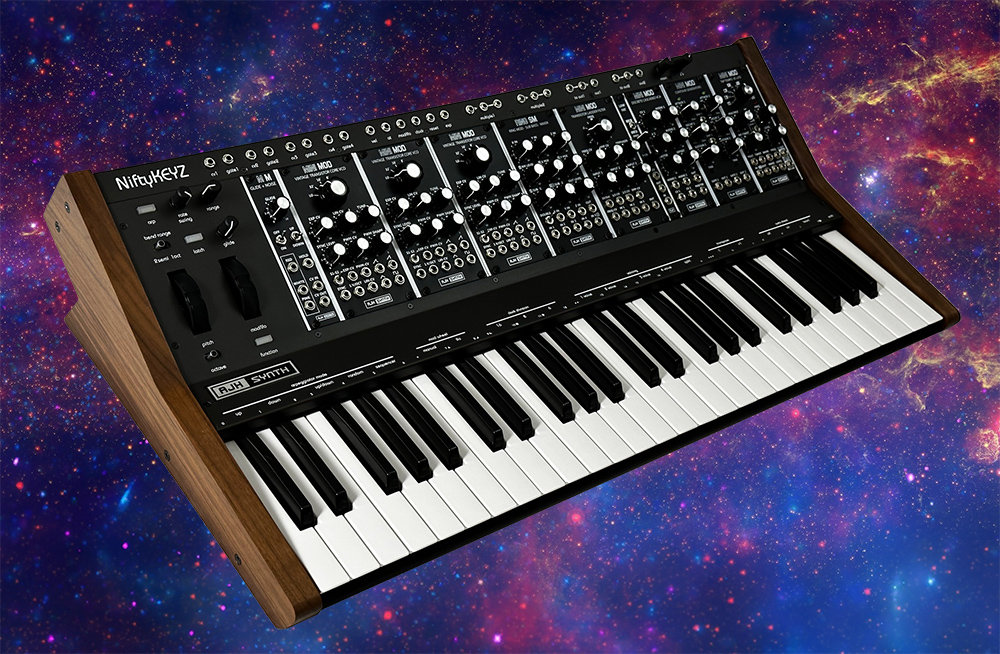
[Above: the AJH Minimod Keyz, an expanded modular adaptation of the Minimoog's concepts]
One other positive facet of a singular modular instrument is that regardless of what you choose to build a system with, the final product will be more flexible than a hardwired synth due to the various patch points afforded by things being modular. For instance, a full AJH system of Minimod modules based on the model D will add quite a bit to the original because of the ability to break the pre routed connections of that synth. As well-loved as the original Model D is, the added patch points of the AJH system would allow for things to get a little weirder. See my point?
Scenario 4: Modular as a Sidecar
One of the more reasonable ways to get started in modular is to buy a self contained modular or semi-modular synth. Many people don't want to dive in without first dipping a toe in the format, and that's totally understandable. Adding a separate sidecar case to a synth like this is a great way to add tons more functionality without going bonkers building a full case from scratch.
To keep things simple, let's briefly discuss this option with the Moog Grandmother as the starting point...
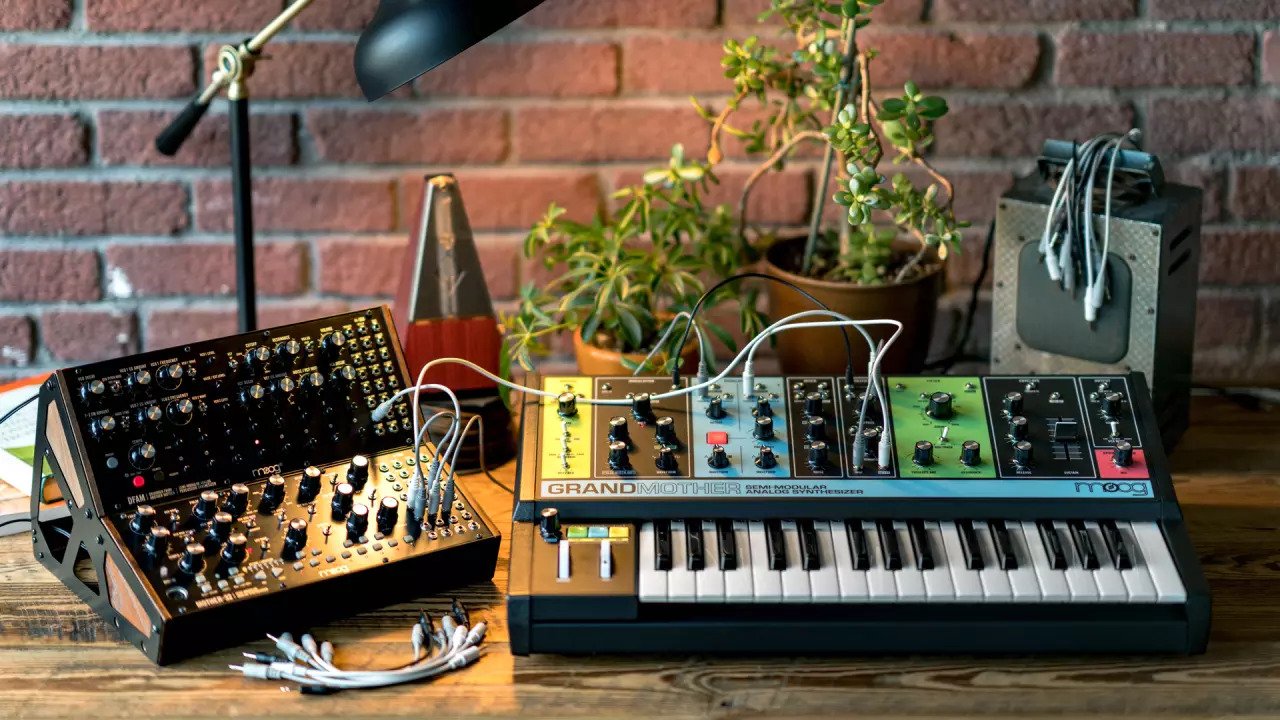
Now, the Grandmother is a self contained synth that immediately packs a punch that will scratch that Moogy itch and tick all the right boxes for most fans of that particular sound. However, the synth is fairly pared down, so that it can pack as much as possible in at its price point. In this instance, adding a small modular case could make a lot of sense. Adding an extra oscillator to get closer to the three-oscillator Minimoog sound or adding an extra envelope to be able to have a separate envelope for the filter makes a logical next step. Here is a fun idea: by using some sort of MIDI to CV converter and a few extra modules, one could turn the Grandmother into a synth capable of playing beyond its monophonic confines and into the realm of polyphony—not unlike its bigger sibling, the Matriarch.
The point of the idea here is that you are already in the door by starting with a fantastic instrument, and no matter what, that is going to provide a solid foundation for a growing modular setup. Things work well and sound great even without adding modules so anything added is just a bonus.
This would also be the option I personally would recommend to anyone starting out in hardware modular. I don’t necessarily mean "go buy a Grandmother and then add a case," but rather, consider starting with a self-contained instrument like Bastl's Softpop II, Intellijel's Cascadia, Make Noise's 0-Coast, even Soma's Pulsar-23 to cover your initial bases. No matter what, any of those instruments will inspire for a long time—and at that point, once you're ready to venture into modular, you are free to add what you think is missing.
All or Some?
In the end, it's entirely up to you to decide what you want your modular synth to be. In fact, that is the entire point of modular synths. If you want a full wall of modules taking up the studio, then you can make that happen (funds permitting). However, if you want a more streamlined approach and don't need something quite so all-encompassing, then there are a number of different ways to do this. The options discussed above just start to scratch the surface on different ways to think about what a modular synth can do.
The point is that once you go modular, it doesn't have to cause everything else in the studio to become less pertinent. In fact, some of the most efficient uses of modular synths are simply as a part of the greater whole.
With a little bit of foresight and planning, the rich ecosystem of musical instruments at your disposal will only be enhanced by a carefully curated modular case.


